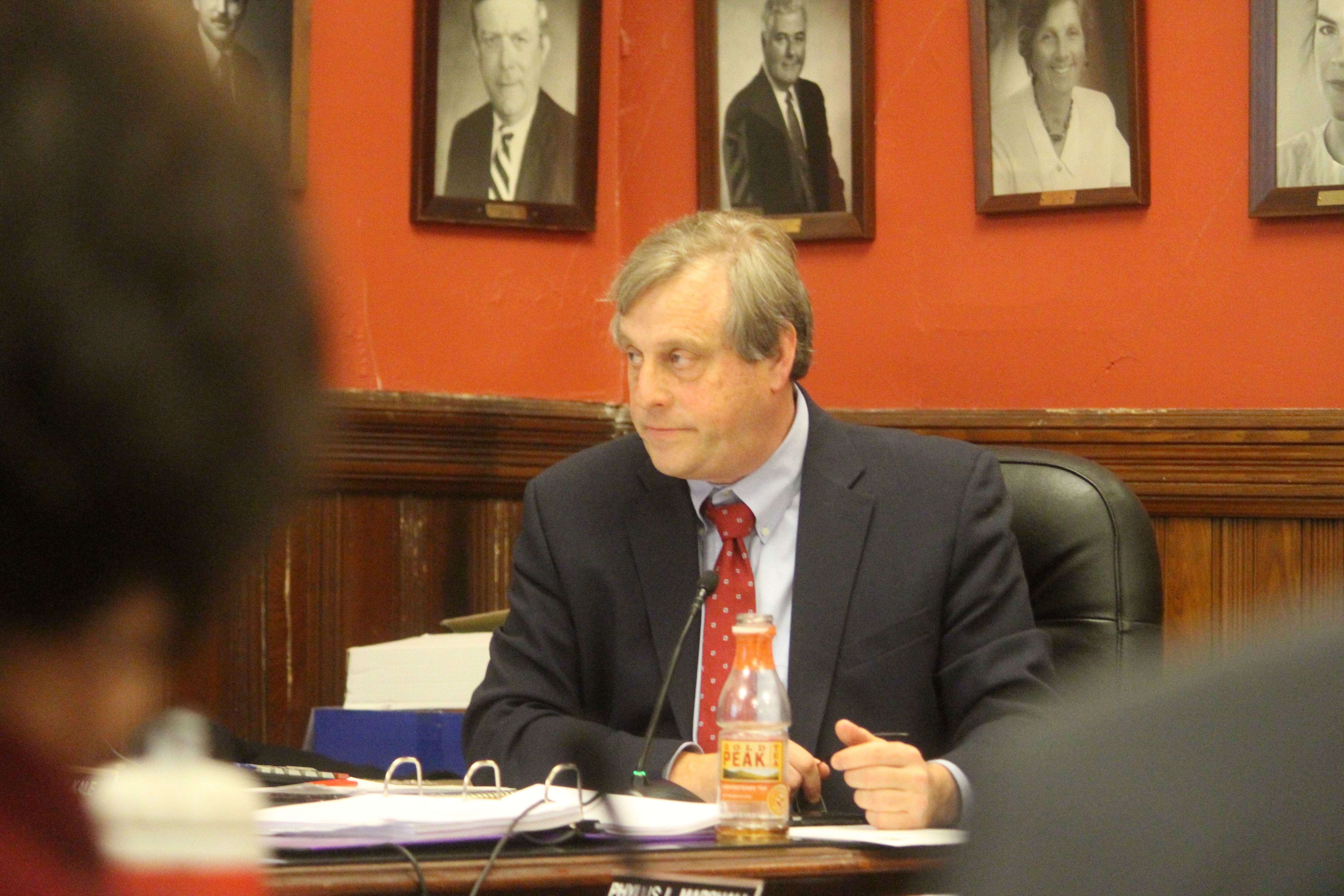Photo: David Kale, Belmont Town Administrator
Belmont’s next budget will see healthy increases in both the town and schools with some hopeful news on “stretching out” the monies that came from the 2015 Proposition 2 1/2 override.
The proposed fiscal 2018 town-wide budget – which begins on July 1, 2017 – is pegged at $110,210,440, an increase of $3.9 million or 3.6 percent, according to outgoing Town Administrator David Kale who presented the budget before a joint meeting of the Board of Selectmen, School and Warrant committees at Town Hall on Monday, Feb. 13.
The presentation consisted of the first preliminary outline – albeit a relatively detailed blueprint – of the town’s financial balance sheet which will be voted on at the annual Town Meeting in June.
When asked by Selectman Jim Williams how complete an outline was before them, Kale affirmed it was more than “90 percent” complete, noting that changes will be coming to the town’s revenue line items. He pointed to state aid to cities and towns coming from Beacon Hill will not be finalized until later in the spring. Kale said it is likely that Belmont will see a small increase in the $600,000 forecast heading to Belmont from the State House.
The biggest component of the budget is, as it is every year, the public schools which will come in at $53.1 million, an increase of $3.1 million from 2017, a 6.0 percent jump. According to Belmont Superintendent John Phelan, the jump in costs are directly related to the continued unprecedented increase in students enrolling in Belmont schools.
Phelan said annually 100 students are entering the Belmont system straining the district with the number of pupils in classrooms, the need for more teachers and staff as well as requiring the district to purchase a second set of modular classrooms in the coming year just to keep pace.
Expenses from the “town” side of the budget – town services and public safety – will see a 4.2 percent increase (approximately $1.6 million) from 2017 to $38.4 million.
Fixed costs – debt payments, retirement assessments, road repair – which makes up 16 percent of the total budget will see an increase of $600,000 to $17.2 million.
On the revenue side, Kale said 90 cents of every dollar coming into the town’s coffers were from real estate and property taxes ($88.5 million, 80 percent) and state aid from the State House ($10 million, 9 percent). Total property taxes will see an increase of $3.2 million or 3.7 percent from 2017 figures.
Belmont is expecting to see in fiscal 2018 a boost in other revenue sources including $200,000 in meals, motor vehicle, and payments instead of taxes and another $200,000 in local receipts.
Kale, who is leaving for a position at the City of Cambridge in March, noted that due to favorable increases in “new growth” and state aid, the town will only require $1.3 million from the General Stabilization Fund, the $4.5 million in additional funds approved in a Prop 2 1/2 override in April 2015, to balance the budget.
Kale said through belt-tightening and a jump in revenue; budget planners were able to cut nearly in half the original $2.2 million they scheduled to take from the line item. He said that figure could be reduced further if added revenues come to Belmont.
By reducing its reliance on the stabilization fund this year, Kale said the town could rely on it for more than the three years it was originally slated to last.








Leave a Review or Comment